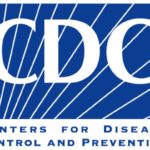
The CDC says if you have had COVID-19, and it’s not a severe case, there are guidelines for when you can be around others:
Adults can be around others after:
- 10 days since symptoms first appeared and
- 24 hours with no fever without the use of fever-reducing medications and
- Other symptoms of COVID-19 are improving **Loss of taste and smell may persist for weeks or months after recovery and need not delay the end of isolation
The CDC says the guidance does not apply to those who had severe cases or who are immunocompromised. This also does not apply to children, as there are not enough studies yet.
The CDC says that six months after the emergence of the coronavirus, there is no evidence of reinfection with the SARS-CoV2 virus.
On August 3, 2020, CDC updated its isolation guidance based on the latest science about COVID-19 showing that people can continue to test positive for up to 3 months after diagnosis and not be infectious to others. The CDC says science does not imply a person is immune to reinfection with SARS-CoV-2, the virus that causes COVID-19, in the 3 months following infection. The latest data simply suggests that retesting someone in the 3 months following initial infection is not necessary unless that person is exhibiting the symptoms of COVID-19 and the symptoms cannot be associated with another illness.
There have been more than 15 international and U.S.-based studies recently published looking at length of infection, duration of viral shed, asymptomatic spread and risk of spread among various patient groups. Researchers have found that the amount of live virus in the nose and throat drops significantly soon after COVID-19 symptoms develop. Additionally, the duration of infectiousness in most people with COVID-19 is no longer than 10 days after symptoms begin and no longer than 20 days in people with severe illness or those who are severely immunocompromised.